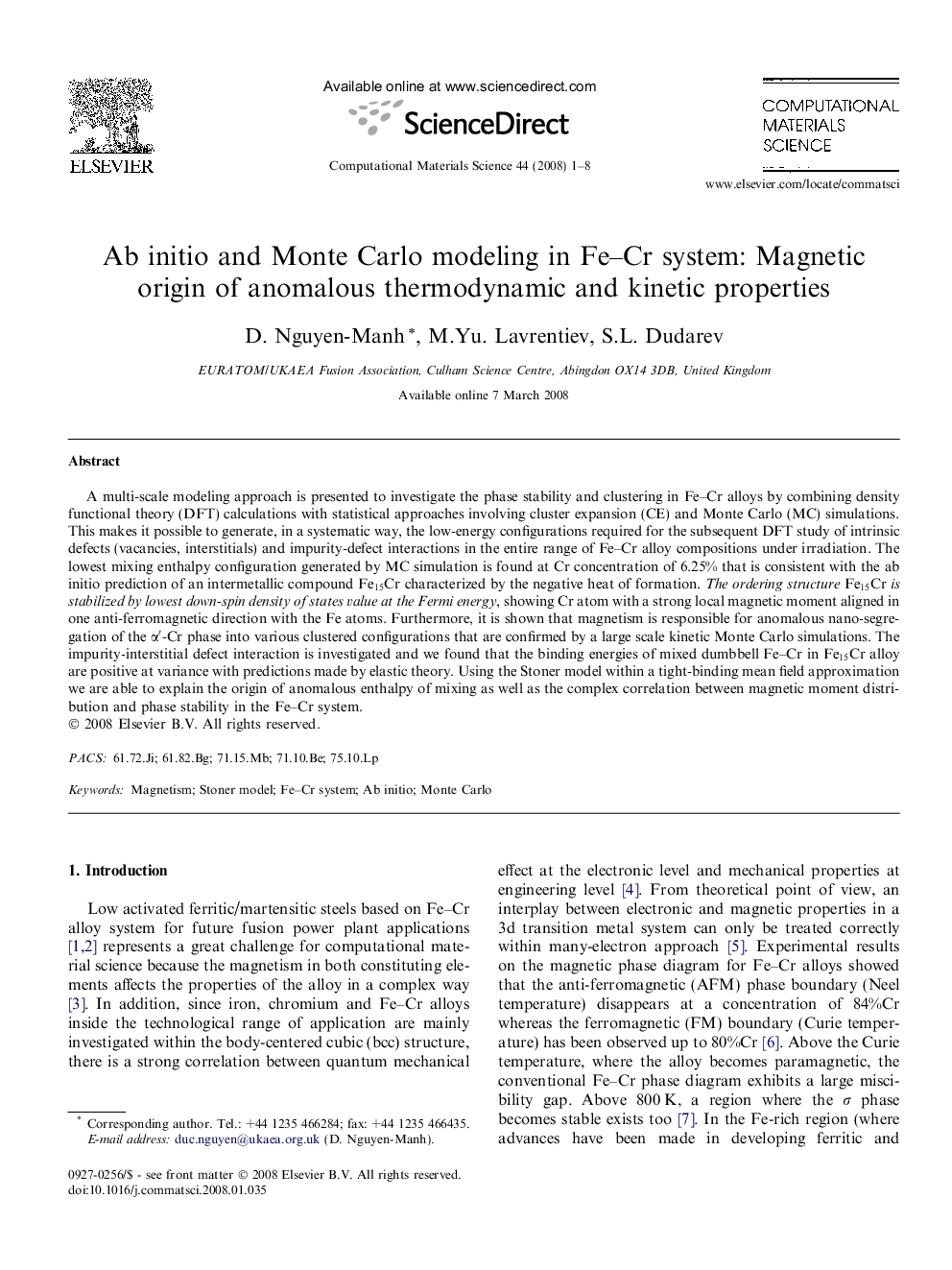| Article ID | Journal | Published Year | Pages | File Type |
|---|---|---|---|---|
| 10644521 | Computational Materials Science | 2008 | 8 Pages |
Abstract
A multi-scale modeling approach is presented to investigate the phase stability and clustering in Fe-Cr alloys by combining density functional theory (DFT) calculations with statistical approaches involving cluster expansion (CE) and Monte Carlo (MC) simulations. This makes it possible to generate, in a systematic way, the low-energy configurations required for the subsequent DFT study of intrinsic defects (vacancies, interstitials) and impurity-defect interactions in the entire range of Fe-Cr alloy compositions under irradiation. The lowest mixing enthalpy configuration generated by MC simulation is found at Cr concentration of 6.25% that is consistent with the ab initio prediction of an intermetallic compound Fe15Cr characterized by the negative heat of formation. The ordering structureFe15Cris stabilized by lowest down-spin density of states value at the Fermi energy, showing Cr atom with a strong local magnetic moment aligned in one anti-ferromagnetic direction with the Fe atoms. Furthermore, it is shown that magnetism is responsible for anomalous nano-segregation of the αâ²-Cr phase into various clustered configurations that are confirmed by a large scale kinetic Monte Carlo simulations. The impurity-interstitial defect interaction is investigated and we found that the binding energies of mixed dumbbell Fe-Cr in Fe15Cr alloy are positive at variance with predictions made by elastic theory. Using the Stoner model within a tight-binding mean field approximation we are able to explain the origin of anomalous enthalpy of mixing as well as the complex correlation between magnetic moment distribution and phase stability in the Fe-Cr system.
Related Topics
Physical Sciences and Engineering
Engineering
Computational Mechanics
Authors
D. Nguyen-Manh, M.Yu. Lavrentiev, S.L. Dudarev,
